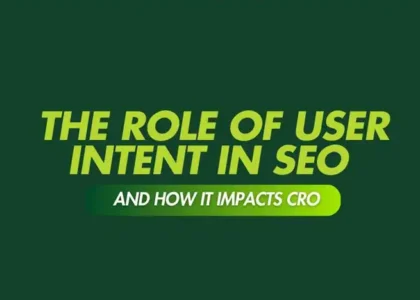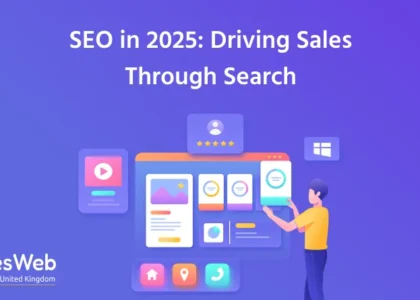Introduction
Is your site having low search engine rankings? Do you see drop in your traffic and conversions?
Then, it is a sign where you may miss out the metrics you need to look at while building the SEO strategies.
Yes, because of poor user experience you may find a negative impact on your SEO efforts. And, there is a relationship between user experience (UX) and Search Engine Optimization (SEO) and increasingly huge metrics to consider when developing your SEO strategies.
One of the ranking factors that Google considers is user experience and it determines the position of your content/ page in search results.
Hence, you need to prioritize one of the SEO strategies as optimizing your website for better user experience.
Let’s discuss how UX impacts SEO and key strategies to improve it.
User Experience: What and Why it is Important?
User experience comprehends how a user interacts with a website, experiences a product or services in all aspects (user’s perception of utility, ease to use and efficiency).
Effective user experience (UX) design helps to engage your audience that has a positive result on search engines ranking system.
The user experience should have content quality and website architecture that interacts with the user.
Good content quality is an important metric that influences UX because your content should answer their search query. In short, the strong UX design where it provides users requests is likely to perform well in SERPs.
While building the technical SEO strategies, you need to focus on site architecture and usability of a site.6 UX Metrics That Influence Seo Performance:
There are various key elements for UX designs that have a huge impact on SEO performance.
Let’s discuss the key elements to focus on improved UX that has influence and metrics to boost the SEO rankings.
- Page Loading Speed
- Minimize your file size
- Optimize the image size, codes, caches
- Server request is comparatively low
- Dwell time
- Bounce Rate
- Poor/ Unclear UX design
- Irrelevant or poorly written content
- Slow site speed
- Mobile Responsiveness
- Site Architecture
- Clear and logical way to navigate: Users look for the site that has a clear menu, categories, sub categories and ignores the sites that have unstructured categories.
- Multi-pages with a lot of content are helpful for SEO rankings as long as it is easy to navigate.
- XML sitemap: It is easy to locate the homepage and navigate the other pages of your site. The pro of having a sitemap is that Google can easily find your site and also assists users to locate your site.
- Create an account on Google search console or make use of online tools to generate a sitemap.
- Site layout: Content arrangement, text size, layout of your webpage has great influence on SEO. Include photos, videos and CTA throughout the site. These combined designs and SEO aspects improve traffic and recognition.
- Content Quality
- Design for the user intent
- Headers
- Users find H1 tags are easy to get answers for their search.
- Crawlers use headings to analyze your site and read the content.
- Social media button visible
Users get annoyed when they find a slow website. It makes them click exit before it loads. Even if the page is never loaded, it is a negative sign and increases your bounce rate.
However, you can’t control the user’s bad internet connection. With full optimization and fastest loading time, you can control the site speed. How?
One of the basic ranking factors is the page speed where Google considers. It is better to run tests on current loading speed with free tools to ensure your site is user-friendly.
Search engines provide attention to the duration that users spend on your website called dwell time.
And, it indicates their level of engagement. If it is high, the audience gets what they need- interesting and relevant information and vice versa. And, you can see the reflections on the search engine ranking.
Therefore, create insightful, relevant content that engages the audience and impacts your user metrics.
The indication of high bounce rate is that users left after visiting the initial page when the page doesn’t answer for what they look for. There are various reasons and causes for high bounce rate likely:
Search engines like Google and Bing consider these factors into their search algorithm. Therefore, site owners have to take necessary steps to maintain the low bounce rate for their website.
On which device you can find the high visitors is the first concern in influencing the user experience.
Now, generally mobile users are high and ensure you implement AMP that ensures good visibility and page speed even in any type of device. With a good mobile site, you can find opportunities to interact and engage with your customers through offering discount codes or personalized texts.
If you don’t check on mobile traffic, then you could lose more than half of your customer base.
The structure of the whole site is also affecting the user experience and concerns of SEO.
Google considers the quality, detailed, informative content that the audience can read, keeping visitors on your page for long. It is best to use relevant content and strong call to action to encourage users to do desired actions on your site.
Three things you need to consider when drafting the content strategy:
If the users get what they are looking for- relevant and without any delay is what matters.
So, if your site is ecommerce, B2C or services this metric should satisfy. What should you do?
As not all the keywords have the same effect or importance for the target audience. So, analyse the intent of your user.
For instance, if you search queries related to “diet charts for beginners” that are located on a page with your nutrition site. You can add another section explaining weight gain or weight loss charts and detailed information about what to eat and importance. Google considers the first page as intent queries and second as information intent queries.
Boost SEO or the audience has to recognize your content? Headings are the best way.
Remember, each page should have one H1 tag followed by H2 or H6 tags, that helps to organize the page contents.
Google considers the content that has been shared on social media accessed from a variety of sources. You can make social media share buttons visible and accessible on all pages. The websites which have more contents or pages can make use of this as essential growth.
4 SEO Tips to Improve UX
When you create your website content or build SEO strategies, hope these tips might help you.
- SEO friendly design
- Alt- Texts
- How well do you know your users?
- Niche Keywords
Design is about how your site looks.
So, remember the technical details when designing the webpage and ensure that every page on your site is structured in a way that bots can understand it.
Google can extract the content from your page and can get position directly in search results when you make your pages machine- readable.
This implementation can benefit both SEO and boost positive user experience irrespective of where or how users access your website.
However, alt text is invisible to users but important for web crawlers.
Alt text is used to tell the machines what information is provided in the image using the HTML image tags. This feature can get users more accessible to your sites. Secondly, if the image doesn’t load you can read the details through HTML tags.
These tags describe your site content that qualifies search engines or Google to place your site in the relevant search queries where users look for.
Need to be one step ahead of your competitors? Then, know your audience.
It is the basis of good UX and to build a SEO strategy. UX designers should have an idea on who visits your site and gather the user’s info and pain points.
Segment it into a customer persona.
You can develop SEO tactics accordingly where it helps to reach users broadly.
Whatever your service or products, you need to research on how your target audience finds you or search your niche queries.
So, focus on a specific region or industry.
It’s okay to make use of long-tail keywords as most niche keywords have lower search volume but they can drive traffic.
Conclusion
Technologies have advanced and there are quite a lot of evolutions that require better optimizations for the users to find your brand/ products or services.
So, you need to be sure about how to drive attention to your site and what users search for.
Therefore, SEO and User experience design are two that need to work together to achieve your KPIs of business. So, while designing the website consider search engine metrics. It means the relevant content for user intent, meta data and other considerations that Google can place you on top for relevant terms searches. In case of ignoring either one may result in an unsatisfactory experience for your target audience.
Hope these tips and ideas can help you to revamp your website and make it more user-friendly!.




